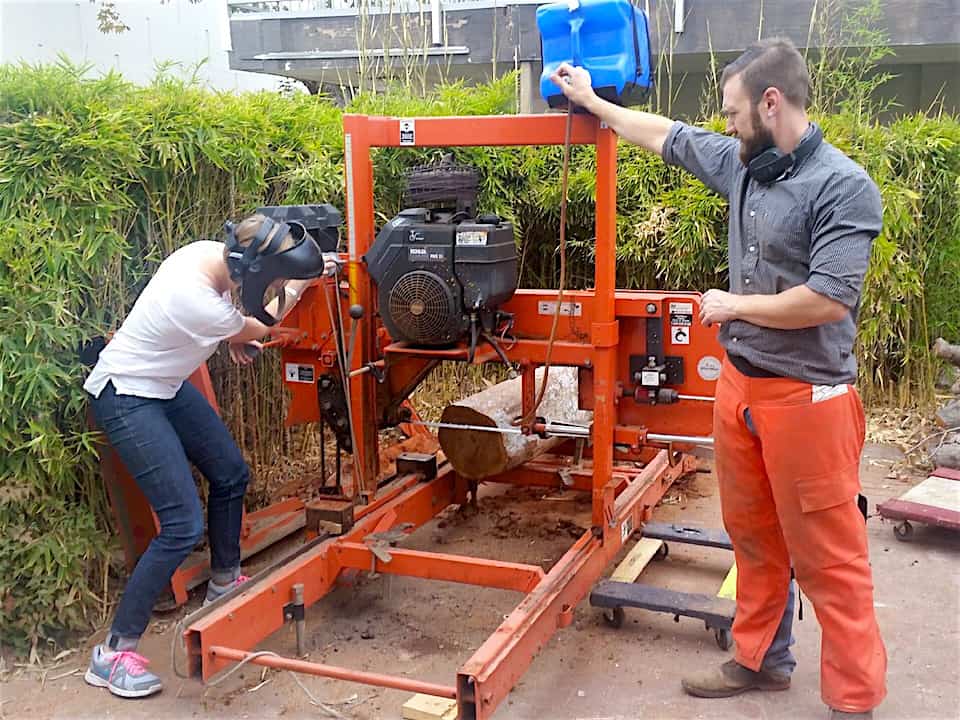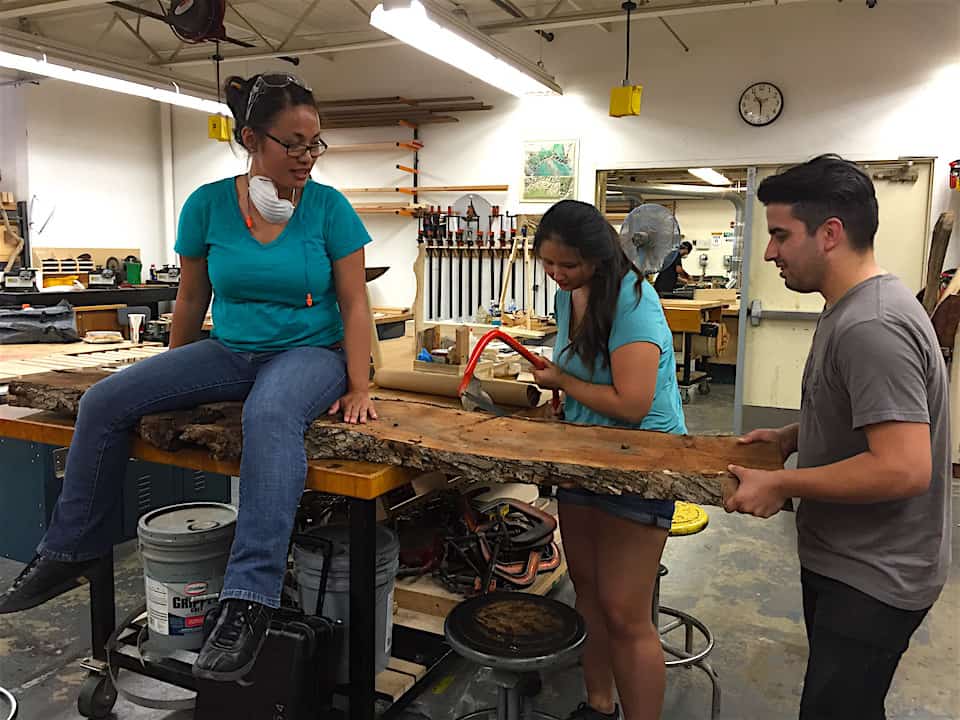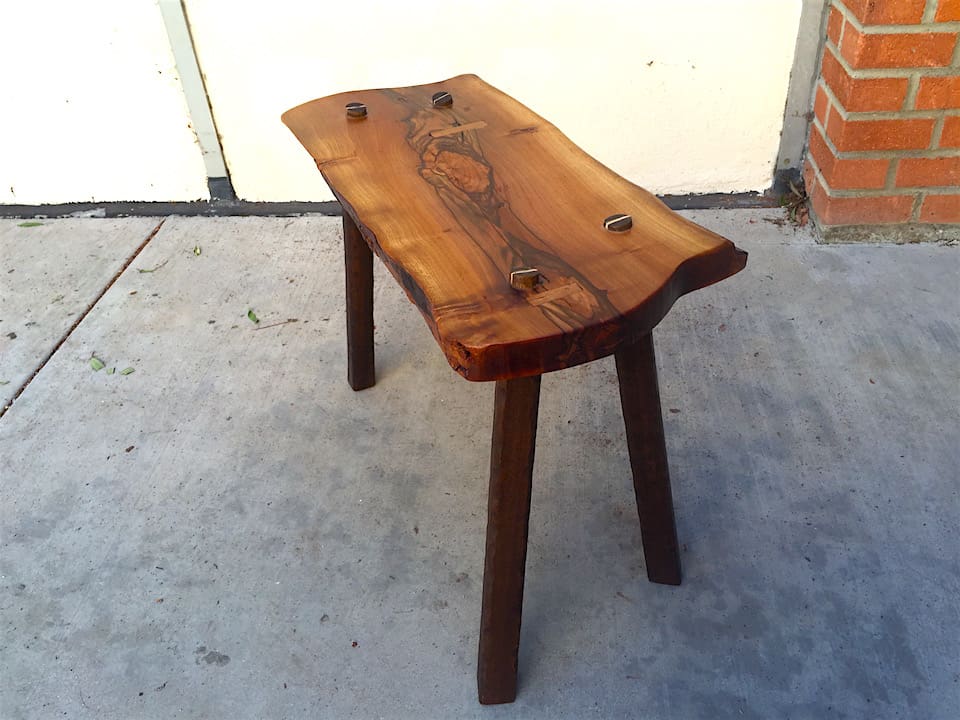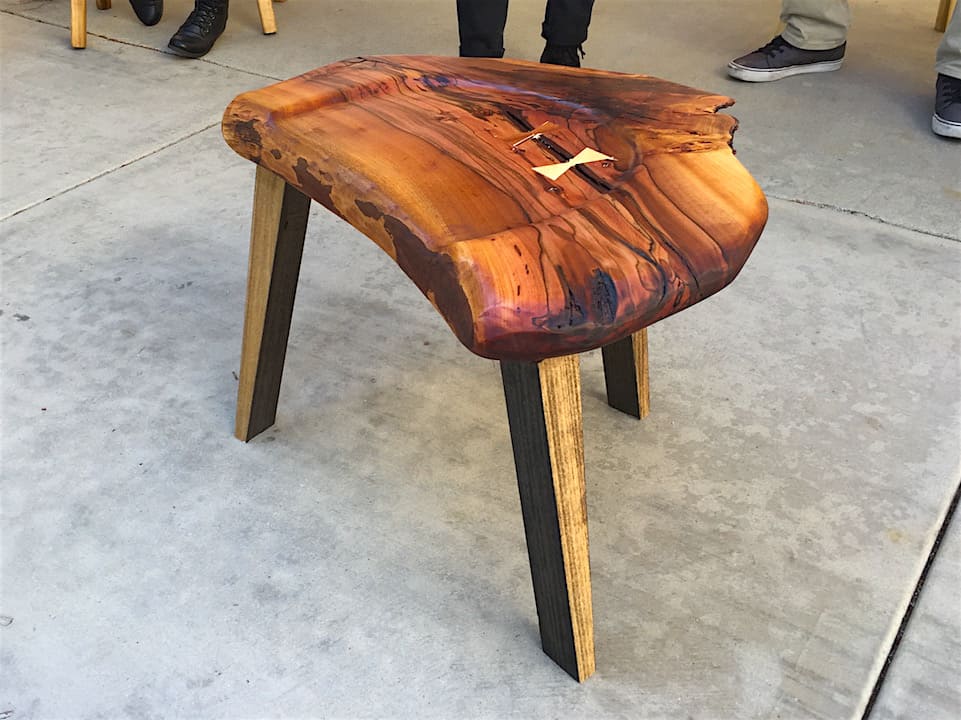A couple years ago, a local woodworker/artist named Ryan Taber contacted Offerman Woodshop about a woodworking program at Cal State University Long Beach that he was in the process of bringing back to life. Shortly thereafter, Ryan came to the shop for an informal tour and soon we were all gathered around him in the break room, hot beverages flowing, listening to him describe a unique wood program and pedagogic vision that, had I been ten years younger, would have sent me running to the office of matriculation. As it happened, three of the Offerman Woodshop members sitting in that room that day–myself, Michele Diener, and Laura Zahn–have since joined the part-time faculty.
One of the most exciting aspects of the wood program at CSULB that Ryan spoke of that day, was the reclaimed urban timber component of the curriculum. Established by Ryan’s predecessor Fred Rose, and run with the help of the campus arborist Brian McKinnon, this program saves ill or fallen trees in the campus forest from the usual fate of the woodchipper and landfill, allowing students and faculty of the Wood program to mill these trees into usable lumber for student projects. Since Ryan became director in 2013, he estimates that they have milled about twenty trees including Red Gum, Lemon scented gum, Iron Bark Eucalyptus, California Pepper, Chinese Elm, Black Locust, Oak, Ash, Indian Laurel Fig, Magnolia, Podocarpus, Red Wood, and Olive. This Fall, the students in my Introduction to Woodworking course got to both mill a freshly fallen tree into slabs and to build stools from air dried slabs of California pepper milled by students a couple years prior.
 Students milling a Chinese Elm tree from the campus forrest with a Wood-Mizer, 2015
Students milling a Chinese Elm tree from the campus forrest with a Wood-Mizer, 2015
 Students hand sawing California pepper slab, 2015
Students hand sawing California pepper slab, 2015
While traditional woodworking & joinery places a high premium on technical precision and pragmatic forethought, working with slabs forces students to be flexible and adaptive. Each slab has a unique set of challenges and defects that have to be navigated and problem-solved. Each slab also has its thrilling visual surprises hidden under the silvered rough-cut surface. My student Rachel Curray describes the revelatory process of sanding and oiling her slab: “I was blown away by how the colors of the grains came to life… It was gorgeous! The greens and purples that I admired so much when I initially saw the milled pepper wood showed more vibrantly with every coat of oil”.
 Finished stool–CA Pepper slab top, mahogany keys, hand-shaped stained poplar legs: Rachel Curray, 2015
Finished stool–CA Pepper slab top, mahogany keys, hand-shaped stained poplar legs: Rachel Curray, 2015
The process of working with an organic slab is also much more sculptural and intuitive than working with dimensional lumber. Rather than concentrating exclusively on squaring up every piece of wood, students get to work with the natural, organic shape of the slab. Wood BFA Martin Hernandez says of building his slab stool, “Working in conjunction with the language of the wood grain and personality of the pepper tree slab, I took to my unconventional style of working and had a “conversation” with the wood…I used different methods of forming the slab between hand planers, electric planers, spoke shave, chisel, gouge, and angle grinder with various attachments using everything at my disposal to create a form that I was satisfied with.”
 Finished stool–CA Pepper top, maple and mahogany butterfly keys, stained poplar legs: Martin Hernandez, 2015
Finished stool–CA Pepper top, maple and mahogany butterfly keys, stained poplar legs: Martin Hernandez, 2015
Through this program, my students learned about sustainable building practices (when a tree becomes furniture rather than landfill, it retains carbon rather than releasing it into the environment). They also got to “have a conversation” with an organic living material–responding to the visual surprises of its surface, its organic shape, and its structural imperfections. The California State University system is struggling financially and it’s amazing what Ryan has been able to do with such a tight budget. Many thanks to Saburr-Tooth for donating the carving and shaping tools used on this project. The program is in need of new milling equipment including new chainsaws and a larger Wood-Mizer or Lucas Mill. For any other information or donations, please contact Ryan Taber at [email protected]